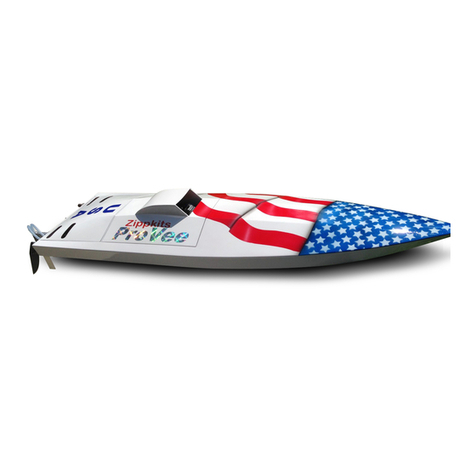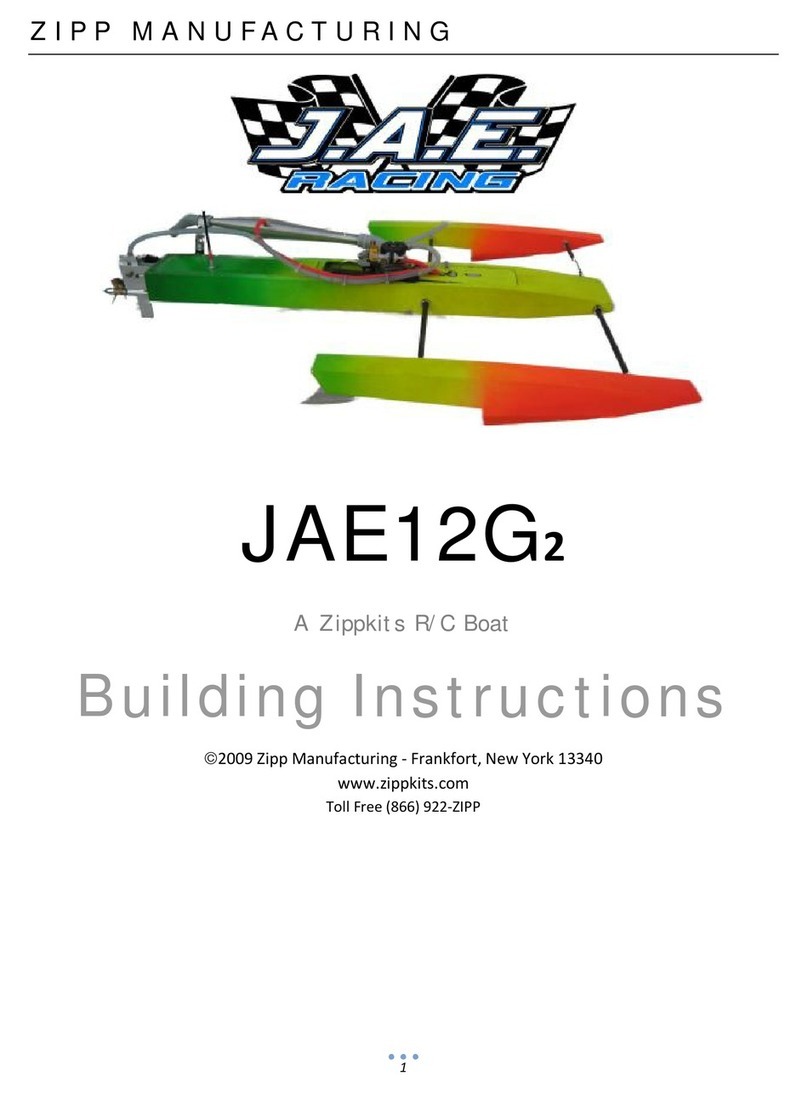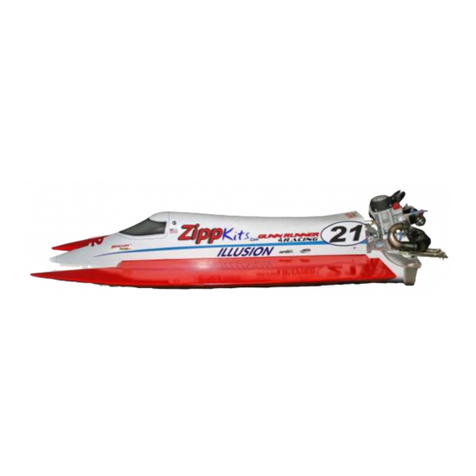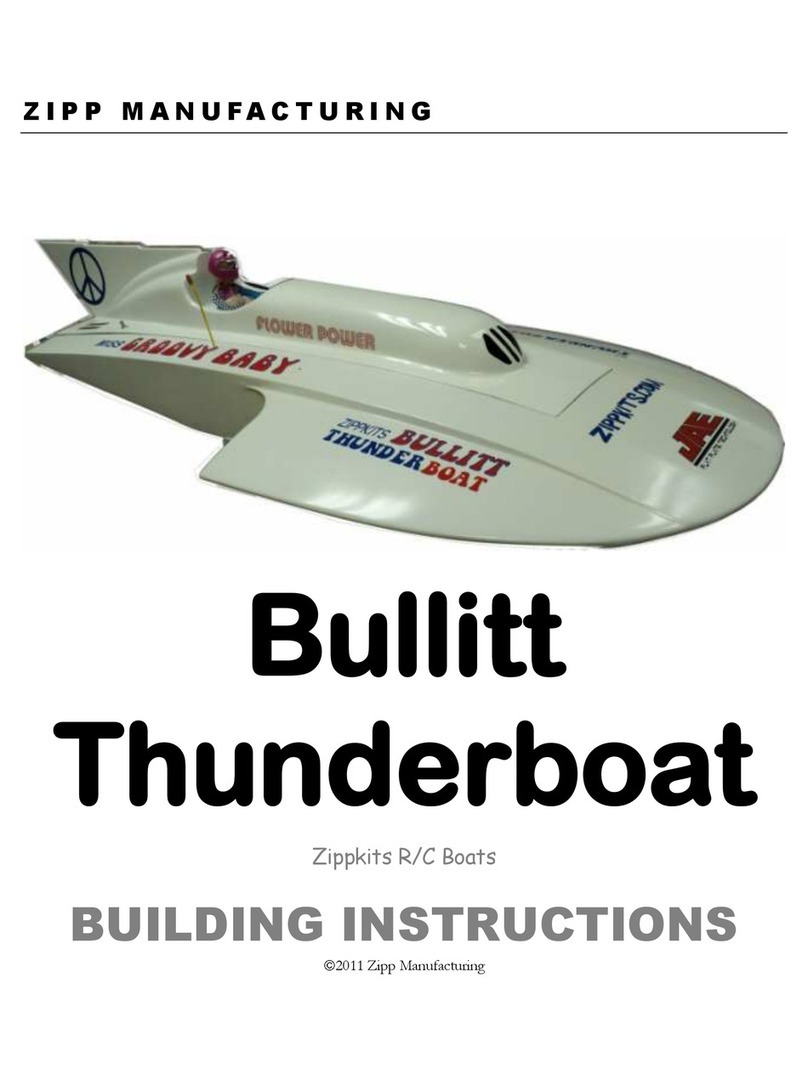
8
Bulkhead2andspines
Bulkheads1, 2andthree inplacewiththespines.
Notethattheholesinthespinesface forward.
Blockclampedtobulkhead5, keepingitflat.
Let’sgetstarted.
Attachthe jigboardtoyourFLAT bench(or12x48
ply) withscrews, nails, clampsorwhateveryou
need, tomakesureit’sattached tothe surface.
Makesurethe “F”issothatyou can read it.
Removebulkheads1, 2, 3and the (2)spines.
Sand the edgeswith80 grittoremovethe fuzz,as
well asthe littletabsthatheldtheminthesheet.
Grab bulkhead 2and the twospines. Pushthe
centerslot of the spinesintobulkhead 2.Check the
fit; it shouldbe flushwiththe topofthe bulkhead.
Put bulkhead 2intothe jig.The holeinthe spines
shouldfaceforward.
Put bulkheads1and 3intothe jig, engaging the
spinesinthe slots.
Starting fromthe frontofthe jig,gluethe tabsof
bulkhead 1tothe jig.
Useasquaretoensurethat it’s90 degreestothe
jig. Alsomakesurethatthe tabsdon’t protrude
underthe jig.
UseCAand accelerator.
Don’t glue the spinesat thistime. Wewillglue them
afterweflipthe hullover.
Whendry and square, glue bulkheads2and 3the
sameway. Usethe square.
Makesurethe “Z”on bulkhead 3isreadablefrom
the back.
Removebothkeels.
Sand asbefore.
Using CA, gluebothkeelstogether. Besurethat
the keelsarealigned witheachother.
Clampwhiledrying.
Remove,sand and glue bulkheads4and 5tothe
jigasbefore.
Makesurethe cutoutinbulkhead 4istoYOUR
RIGHT, when looking atthe back of the boat(it will
be on the left,forexhaust, when upright).
Find the two¼plyengine rails. Sand themsmooth
with80.
Nowlookat bulkhead 5.Isittwisted orwarped? If
so, clampapieceof wood tothe back ofit forthe
next fewsteps.
Check the fitof the engine railsintobulkheads3, 4
and 5.
Ifok, glue themin(the bigend goesforward).
The keel shouldbe dry bynow.
Check the fitof the keelintobulkheads1, 2and 3.
Ifok, glue itin, making surethe keel iscentered on
bulkhead 1.
Thiskind oflookslikeaboat,doesn’t it?
Takeabreak,and givethe glue alittlewhileto
completelycure.































